Thanks to rampant encroachment, over one-third of one of Asia’s longest and best runways, 11-29 at New Delhi’s Indira Gandhi International Airport cannot be used.
At any airport, two measurements are crucial for pilots for every runway. Landing Distance Available (LDA) and Take Off Run Available i.e. how much of the runway length is actually usable for flight operations.
The newest runway at Delhi, 11-29, which cost a whopping 1,000 Cr ($ 200 million) is fitted with the fog busting Cat IIIB ILS landing system, which requires the airplanes to descend at a gentle 3 degrees angle.

However, rampant encroachment by new construction in the flight path is forcing the aircraft to fly higher and land further down the runway which effectively lowers the capacity of the runway.
As per AIP data available on Runway 29, which flies over the posh enclaves of Vasant Kunj and Mehrauli known to house the elite power brokers of the country, is the worst affected — with over 36% of the runway not being usable i.e. from 4.4km to a mere 2.8km.
Rwy 11-29 – Category F (A380, AN 225)
Length – 4,430m. LDA 11 – 3,465m (78% of total length). LDA 29 – 2,820m (64% of total length)
In comparison the two older runways at Delhi (09-27 and 10-28) are almost fully usable since development and resultant encroachment has been restricted. It does not hurt that the elite politicians and bureaucrats do not live in the flight path of these two older runways or else Delhi would have never got in to the jet age.
Rwy 09-27 – Category E certified (B747, A340, MD11)
Length – 2,813m. LDA 27 – 2,661m. LDA 09 – 2,813m.
Rwy 10-28 – Category E certified (B747, A340, MD11)
Length – 3810m. LDA / TORA both ends 3810m
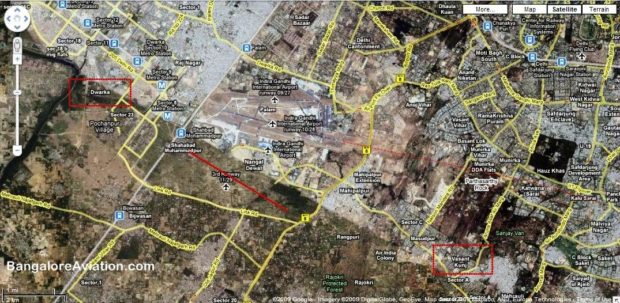
Clearly there is a lack of coordination between the aviation regulators like DGCA and the Delhi municipal authorities. Liberal interpretation of height restrictions by the building regulators only adds to the problems.
The new airports at Bangalore and Hyderabad do not suffer any encroachment, as of now, and offer 100% of their runway.
Mumbai’s Chhatrapati Shivaji International Airport has an increased glide slope angle which requires steeper descents but despite this, they too suffer the consequences of encroachment resulting in a usability loss of about 15% of the runway length.
Civic authorities across India’s cities have a poor record. Corruption, power broking, and sycophancy is rampant and real estate is the favourite money parking destination.
Runways are an expensive part of an airport’s already expensive infrastructure. By not curbing encroachment, the cost of building and operating airports only increase; and that burden is first borne by passengers, but ultimately the Indian economy.
Recently, Lufthansa’s Director South Asia, Axel Hilgers told me that Lufthansa would definitely consider Delhi as an Airbus A380 destination. Given this rampant encroachment the A380 will fit on to Delhi’s runway, but only just. In the long term, one has to ask the question — how long will it be before the Superjumbo gets crowded out?
Related article
 Bangalore Aviation News, Reviews, Analysis and opinions of Indian Aviation
Bangalore Aviation News, Reviews, Analysis and opinions of Indian Aviation
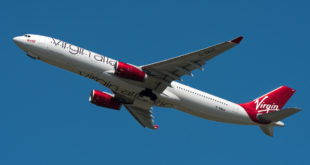
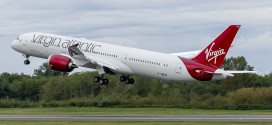
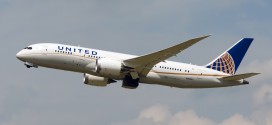
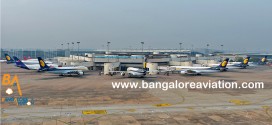
One comment
Pingback: Runway capacity challenges at Delhi airport - Bangalore Aviation